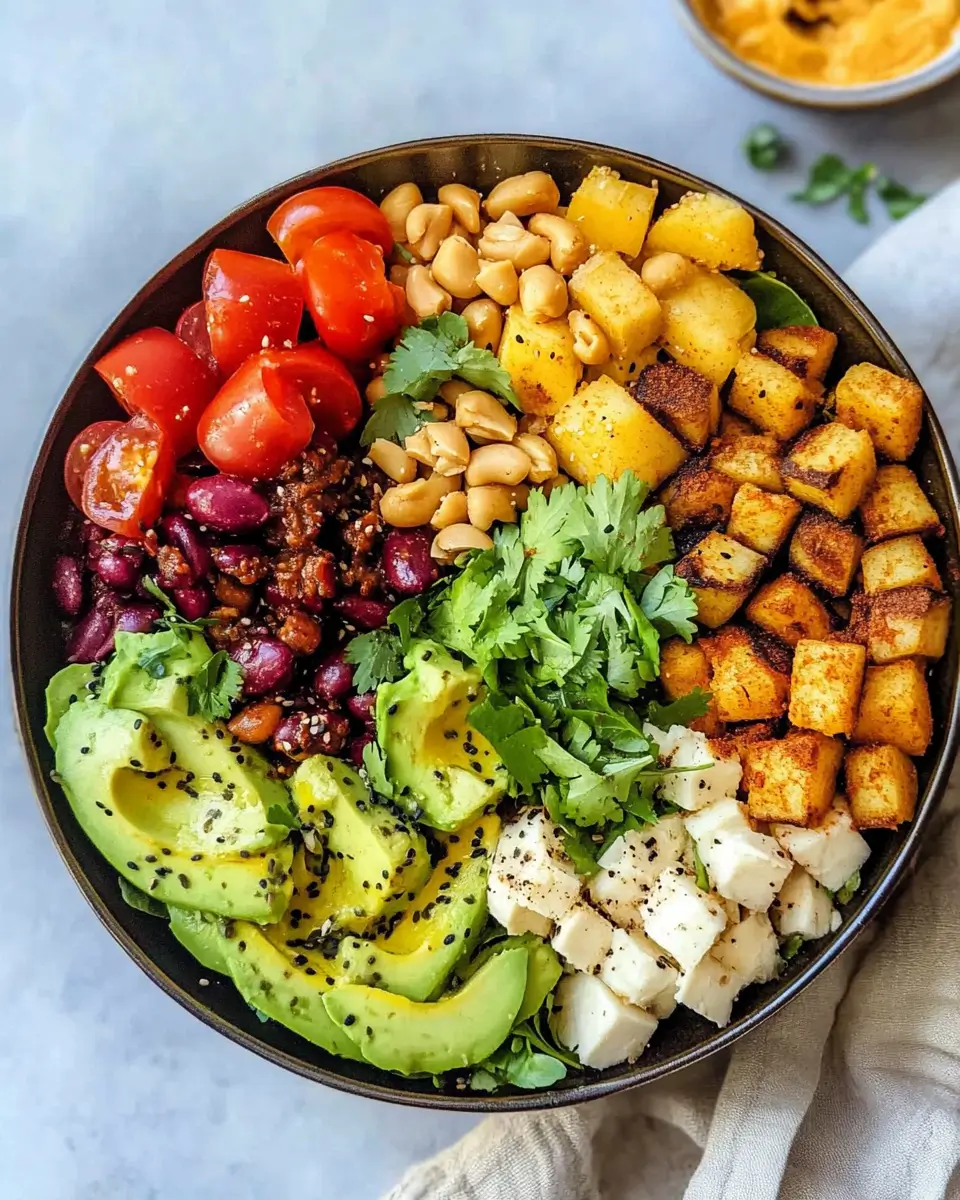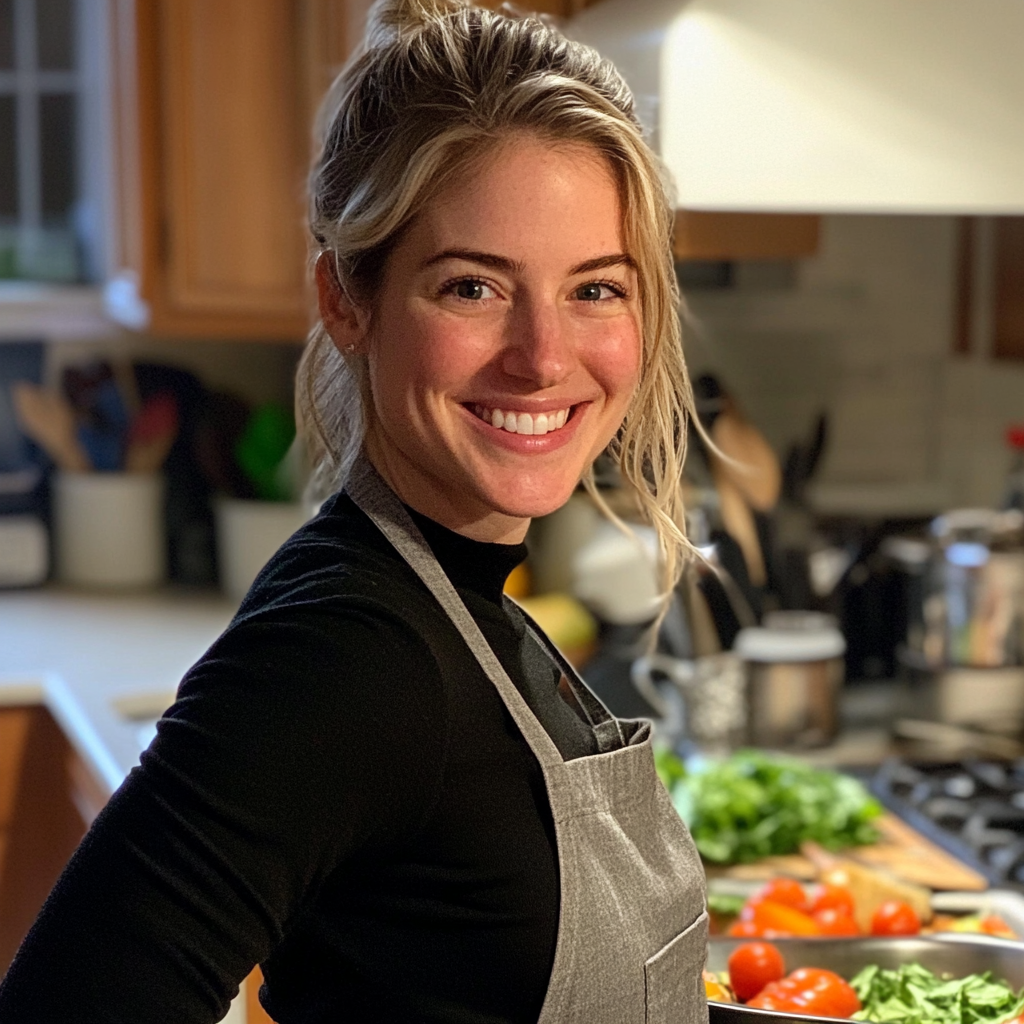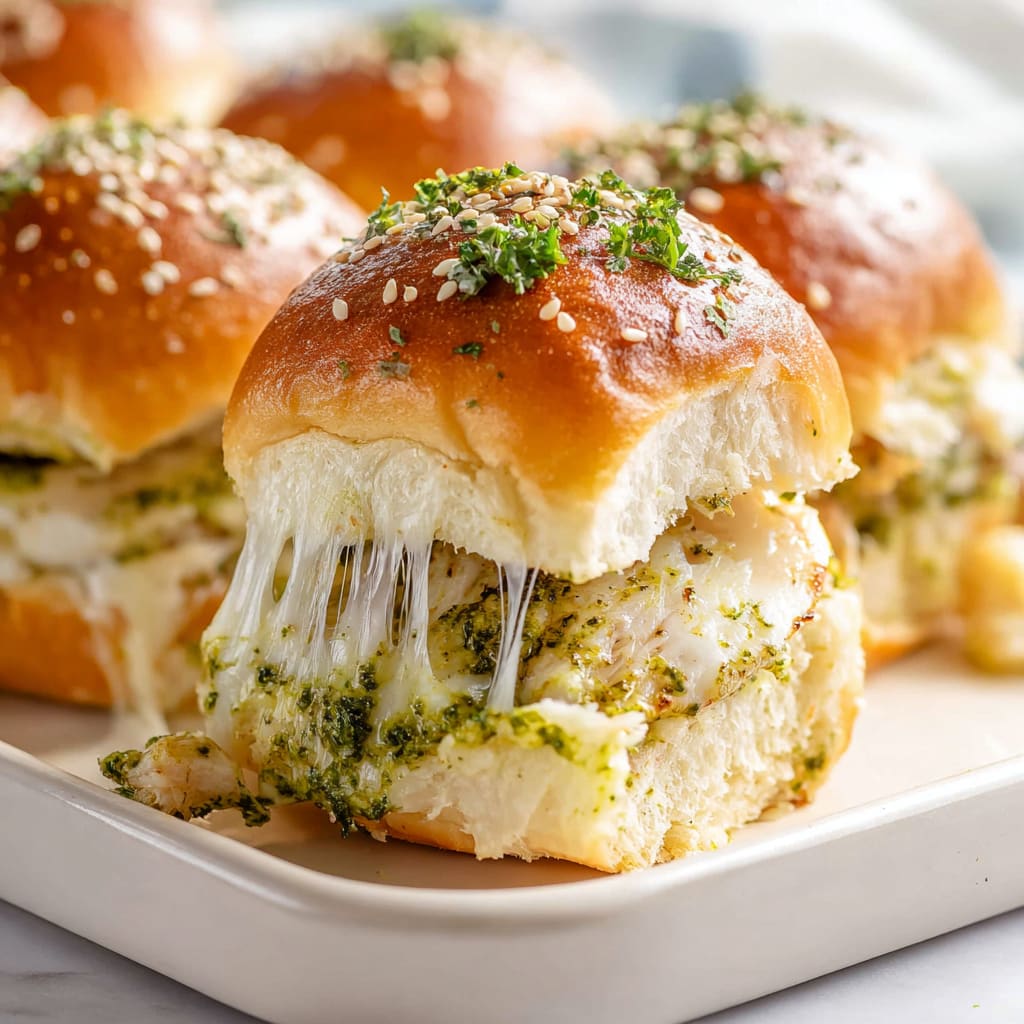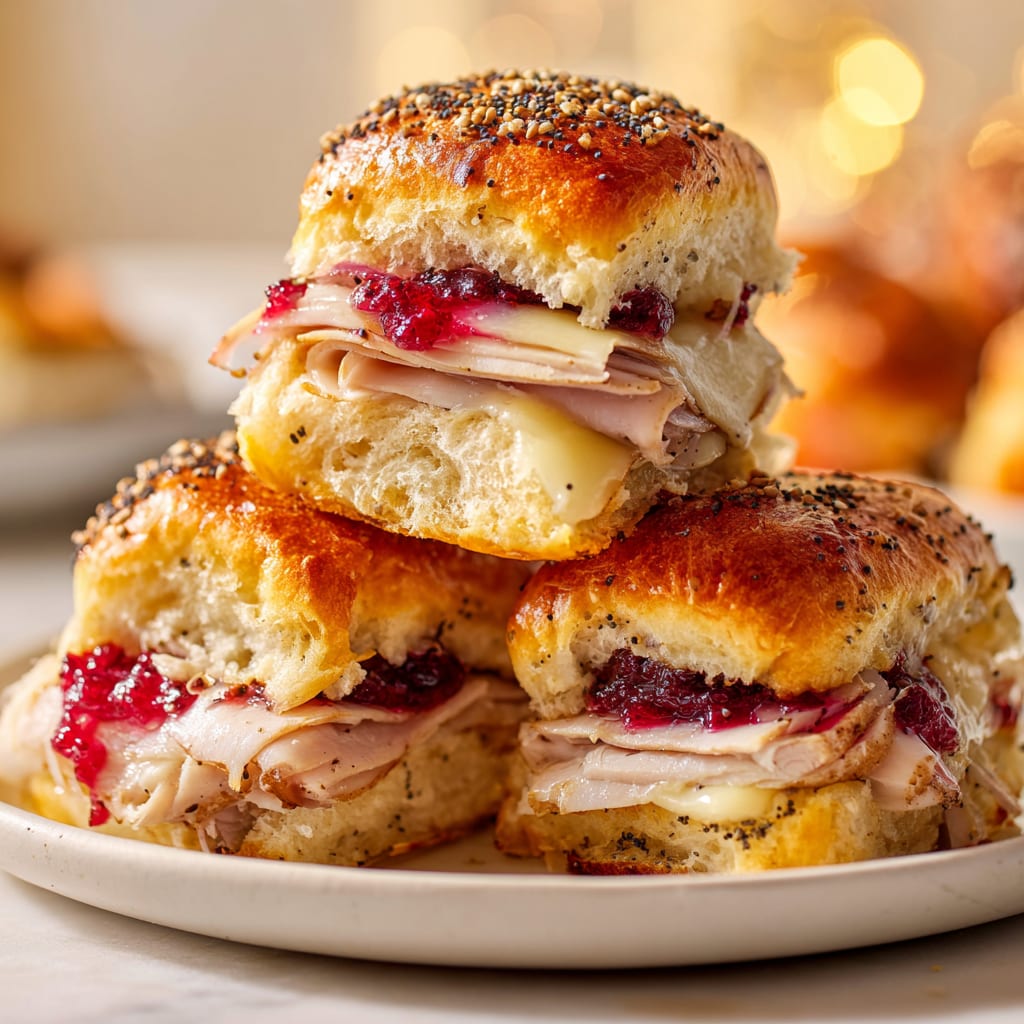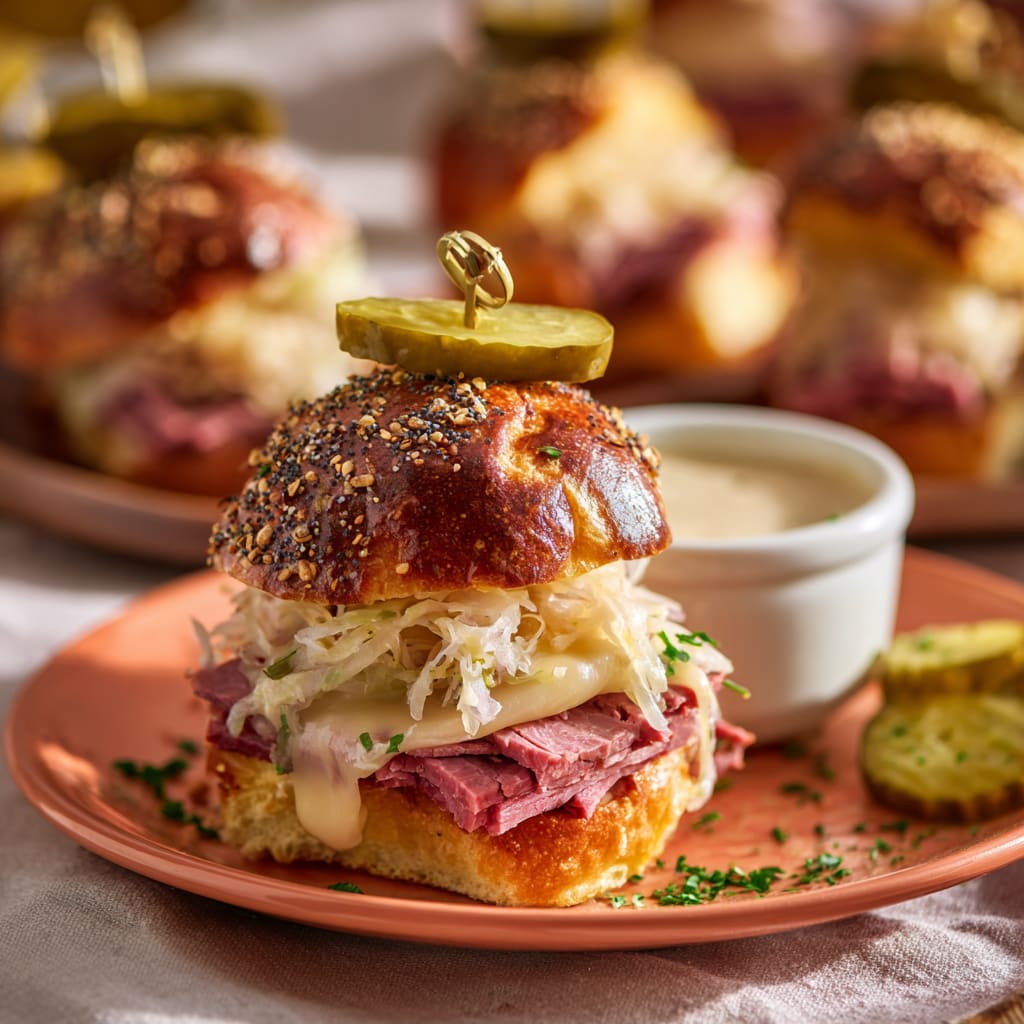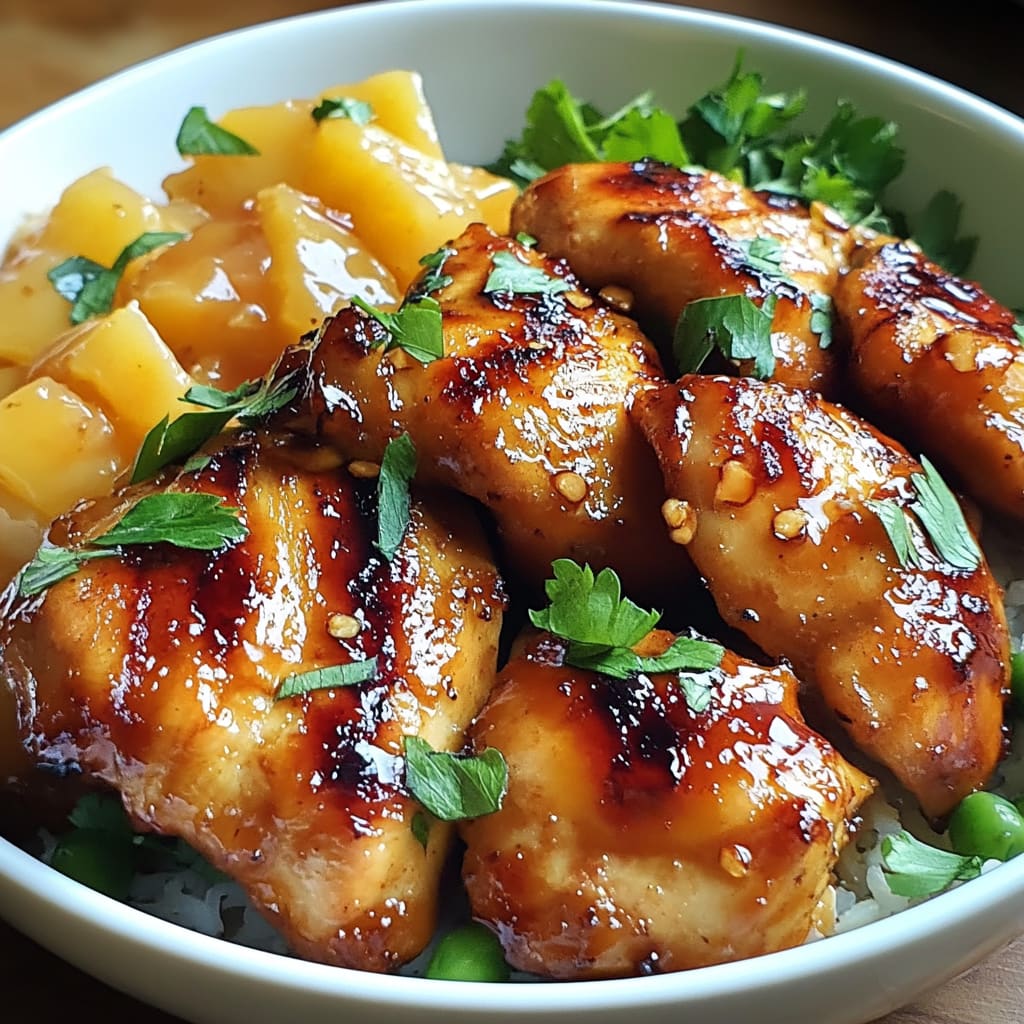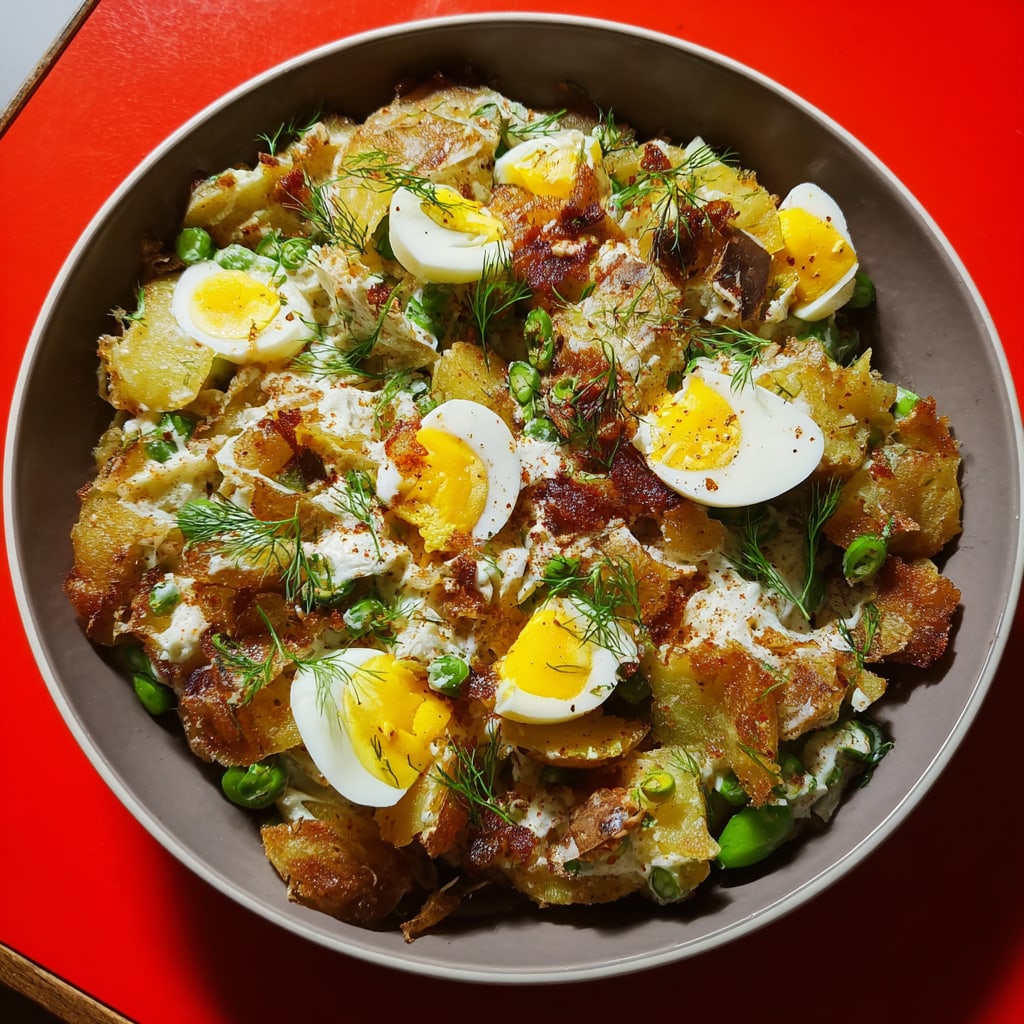Vibrant, nourishing, and endlessly customizable, Best Healthy Buddha Bowls are the perfect solution for mindful eating. These colorful, nutrient-dense bowls combine the perfect balance of whole grains, protein, vegetables, and flavorful sauces, all artfully arranged in a wide, shallow bowl that resembles Buddha’s belly—hence the name. Best Healthy Buddha Bowls have become a sensation in health-conscious communities for their ability to pack complete nutrition into one beautiful, Instagram-worthy meal. You’ll learn how to create the perfect balance of flavors, textures, and nutrients to craft Buddha Bowls that are as delicious as they are nourishing.
Why You’ll Love This Recipe
Best Healthy Buddha Bowls are the ultimate solution for anyone seeking a flexible, nutritious meal that never compromises on flavor. The magic lies in the interplay of textures: tender grains, crisp fresh vegetables, creamy avocado, and crunchy seeds or nuts create a satisfying mouthfeel with every bite. These bowls are incredibly versatile, allowing you to use whatever ingredients you have on hand, making them perfect for meal prep or reducing food waste.
What truly sets Healthy Buddha Bowls apart is their ability to deliver complete nutrition in one beautiful package. Each component serves a purpose—whole grains provide sustained energy, plant or animal proteins build muscle, colorful vegetables deliver vitamins and antioxidants, and healthy fats from avocados or dressings keep you satisfied. The visual appeal is undeniable too; arranging components in sections creates an artistic presentation that makes healthy eating feel like a luxurious experience rather than a chore.
Best of all, these bowls are adaptable to any dietary preference, whether you’re vegan, paleo, gluten-free, or simply trying to incorporate more whole foods into your diet. They’re a blank canvas for culinary creativity that rewards experimentation.
Ingredients
For the perfect Best Healthy Buddha Bowl, you’ll need:
Base (choose one):
- 1 cup cooked brown rice, quinoa, or farro
- 2 cups leafy greens (spinach, kale, or mixed greens)
- 1/2 cup cooked sweet potato cubes (about 1 medium potato)
Protein (choose one):
- 4 oz grilled chicken breast, sliced
- 4 oz baked tofu, cubed
- 1/2 cup cooked chickpeas or lentils
- 1 boiled egg, halved
Vegetables (choose 3-4):
- 1/2 cup shredded carrots
- 1/2 cucumber, sliced
- 1/4 red cabbage, thinly sliced
- 1/2 cup cherry tomatoes, halved
- 1/4 bell pepper, sliced
- 1/2 cup broccoli florets, lightly steamed
Healthy fats:
- 1/4 avocado, sliced
- 1 tablespoon olive oil
- 1 tablespoon seeds (chia, hemp, or pumpkin)
Dressing (choose one):
- 2 tablespoons tahini lemon dressing
- 2 tablespoons miso ginger dressing
- 2 tablespoons avocado lime dressing
Pro Tips
Creating the perfect Best Healthy Buddha Bowl relies on three critical techniques that elevate it from a simple meal to a culinary experience. First, master the art of proper grain cooking—rinse your grains thoroughly before cooking to remove excess starch, and use the absorption method (2:1 water to grain ratio) for perfect fluffy quinoa or brown rice. Let cooked grains rest covered for 5-10 minutes after cooking to allow moisture to distribute evenly.
Second, focus on proper vegetable preparation techniques. For raw vegetables, uniform cutting ensures both visual appeal and even distribution of flavors. Try using a mandoline for paper-thin cucumber or radish slices, or a spiralizer for vegetables like zucchini or carrots to add interesting textures. For cooked vegetables, roasting at high heat (425°F) creates caramelization that adds depth of flavor without sacrificing nutrients.
Finally, the dressing makes or breaks your Buddha Bowl. Create balanced dressings with the perfect ratio of acid to fat (generally 1:3 for vinaigrettes). Emulsify dressings properly by slowly adding oil to acid while whisking vigorously, or shake ingredients in a sealed jar. Always taste and adjust seasonings before drizzling over your bowl, and remember that a little goes a long way—you can always add more, but you can’t remove excess.
Step-By-Step Instructions
Step 1: Prepare Your Base
Start by cooking your chosen grain according to package instructions. For quinoa, rinse thoroughly and use a 1:2 ratio of quinoa to water, bringing to a boil then simmering covered for 15 minutes until water is absorbed. While your grain cooks, wash and dry your leafy greens if using them as a base or component. If you’re using sweet potatoes, preheat your oven to 400°F, toss cubed sweet potatoes with a light drizzle of olive oil and roast for 20-25 minutes until tender and slightly caramelized.
Step 2: Prepare Your Protein
While your base components cook, prepare your protein. For chicken, season with salt, pepper, and your favorite herbs before grilling or baking until it reaches 165°F internally. For tofu, press it between paper towels to remove excess moisture, cube it, toss with a light coating of cornstarch and your preferred seasonings, then bake at 400°F for 25-30 minutes, flipping halfway through. If using chickpeas or lentils, drain and rinse them thoroughly, then consider roasting chickpeas with spices for extra crunch.
Step 3: Prepare Your Vegetables
Wash and prepare all your vegetables, aiming for a rainbow of colors to maximize nutritional variety. Create visual interest by using different cutting techniques—julienne some veggies, dice others, and shave or ribbon a few. Steam broccoli or other cruciferous vegetables lightly to enhance digestibility while maintaining their vibrant color and nutritional profile. For added flavor complexity, consider quick-pickling red cabbage or radishes in a mixture of vinegar, water, and a pinch of sugar.
Step 4: Make Your Dressing
For a tahini lemon dressing, whisk together 2 tablespoons tahini, 1 tablespoon lemon juice, 1 teaspoon maple syrup, 1 small minced garlic clove, and enough water to reach your desired consistency. For miso ginger dressing, combine 1 tablespoon white miso paste, 1 tablespoon rice vinegar, 1 teaspoon grated ginger, 1 teaspoon soy sauce, and 2 tablespoons olive oil. For avocado lime dressing, blend 1/2 ripe avocado with 2 tablespoons lime juice, 1 tablespoon olive oil, a handful of cilantro, and salt to taste.
Step 5: Assemble Your Buddha Bowl
Take a wide, shallow bowl and start by arranging your base in one section (about 1/3 of the bowl). Next, place your protein in another section. Arrange your prepared vegetables in separate sections around the bowl, grouping similar colors together for visual impact. Add your healthy fat component like sliced avocado or a sprinkle of seeds. Just before serving, drizzle your freshly made dressing over the top, being careful not to drown the ingredients. Garnish with fresh herbs, microgreens, or a final sprinkle of seeds for added texture and visual appeal.
Variations
Mediterranean Buddha Bowl: Transform your Best Healthy Buddha Bowl with Mediterranean flavors by using quinoa as your base, topped with chickpeas, cherry tomatoes, cucumber, kalamata olives, and feta cheese. Dress with a simple lemon-olive oil vinaigrette infused with oregano and garlic. Add a dollop of hummus for extra creaminess and a sprinkle of za’atar for authentic flavor. This variation is rich in heart-healthy fats and plant proteins.
Asian-Inspired Buddha Bowl: Create an Eastern flavor profile by using brown rice as your base, topped with edamame, shredded carrots, sliced red bell peppers, and avocado. Add crispy tofu marinated in soy sauce and ginger, then garnish with sliced green onions, sesame seeds, and nori strips. Dress with a miso-ginger dressing for a umami-rich bowl packed with plant-based protein and anti-inflammatory ingredients. For a low-carb version, substitute cauliflower rice for the brown rice.
Mexican Buddha Bowl: Build a fiesta-inspired Buddha Bowl with a base of cilantro-lime brown rice topped with black beans, roasted corn, cherry tomatoes, and thinly sliced red onion. Add sliced avocado and a dollop of Greek yogurt in place of sour cream. Dress with a cilantro-lime vinaigrette and garnish with fresh jalapeños for heat lovers. This variation offers complete proteins through the rice and bean combination along with plenty of fiber and healthy fats.
Storage and Serving
Best Healthy Buddha Bowls make excellent meal prep options when components are stored properly. Keep prepared ingredients in separate airtight containers in the refrigerator for up to 4 days. Store delicate greens with a paper towel to absorb excess moisture, and keep dressings separate until serving to prevent sogginess. For maximum freshness, wait to slice avocados until just before serving.
When ready to enjoy your Buddha Bowl, you can serve components cold or gently reheat grains and roasted vegetables in the microwave for 30-45 seconds before assembling. Serve your bowl with chopsticks for an authentic experience that encourages mindful eating and appreciation of each component. For a dinner party presentation, create a Buddha Bowl bar by arranging all components in separate serving dishes, allowing guests to customize their own bowls according to their preferences. Pair your Buddha Bowl with a chilled kombucha, sparkling water with citrus, or a light white wine for a complete, refreshing meal.
FAQs
What makes a Buddha Bowl different from a regular salad?
A Buddha Bowl typically includes a grain base, which traditional salads often lack, and components are arranged in sections rather than tossed together. The name comes from the bowl’s rounded appearance resembling Buddha’s belly, and they’re designed to provide complete nutrition in one dish with balanced macronutrients.
Can I make Buddha Bowls ahead of time?
Yes! Buddha Bowls are perfect for meal prep. Prepare all components and store them separately in the refrigerator for up to 4 days. Keep dressings separate and add avocado just before serving to maintain freshness and prevent browning.
How do I ensure my Buddha Bowl is nutritionally balanced?
Follow the simple formula of 1/4 grain or starchy vegetables, 1/4 protein, 1/2 vegetables, plus a healthy fat component and flavorful dressing. This naturally creates a balanced macronutrient profile with complex carbs, protein, healthy fats, and plenty of micronutrients.
Are Buddha Bowls always vegetarian?
No, while many Buddha Bowls are plant-based, they can include any protein source. The key is using whole, minimally processed ingredients, whether you choose chicken, tofu, eggs, or legumes as your protein.
What’s the best type of bowl to use for a Buddha Bowl?
Wide, shallow bowls work best for Buddha Bowls as they provide ample space to arrange components without mixing them. Ideally, choose a bowl with at least an 8-inch diameter and 2-inch depth to comfortably fit all ingredients while maintaining the distinctive sectioned presentation.
Conclusion
These Best Healthy Buddha Bowls are mindful eating at its finest — vibrant, nourishing creations that celebrate the beauty of whole foods arranged in perfect harmony. They’re the kind of dish that transforms healthy eating from a chore into a joyful ritual, allowing endless creativity while delivering complete nutrition. Whether you’re meal prepping for a busy week ahead or looking to reset your relationship with food, these beautiful bowls invite you to slow down and savor each thoughtfully chosen ingredient. Make them once, and you’ll understand why Buddha Bowls have become the ultimate symbol of balanced, conscious eating.
Print
Best Healthy Buddha Bowls
Description
The ultimate way to eat the rainbow! These vibrant Buddha Bowls pack complete nutrition into one gorgeous meal—customize with your favorite grains, proteins, and veggies for a satisfying healthy dish that never gets boring.
Ingredients
- 1 cup cooked brown rice, quinoa, or farro
- 2 cups leafy greens (spinach, kale, or mixed greens)
- 4 oz protein of choice (grilled chicken, tofu, chickpeas, or boiled egg)
- 1/2 cup shredded carrots
- 1/2 cucumber, sliced
- 1/4 red cabbage, thinly sliced
- 1/2 cup cherry tomatoes, halved
- 1/4 avocado, sliced
- 1 tablespoon seeds (chia, hemp, or pumpkin)
- 2 tablespoons dressing of choice (tahini lemon, miso ginger, or avocado lime)
- 1/2 cup sweet potato cubes, roasted (optional)
- Fresh herbs for garnish (cilantro, mint, or parsley)
Instructions
- Cook your grain of choice according to package instructions. Let cool slightly.
- Prepare your protein: grill chicken, bake tofu, rinse chickpeas, or boil an egg.
- Wash and prep all vegetables, creating uniform pieces for even distribution.
- Make your dressing by whisking all ingredients together until smooth.
- Assemble your bowl by placing grain in one section (about 1/3 of the bowl).
- Arrange protein and vegetables in separate sections around the bowl.
- Add sliced avocado and sprinkle with seeds for healthy fats.
- Drizzle with your prepared dressing just before serving.
- Garnish with fresh herbs and enjoy immediately.

